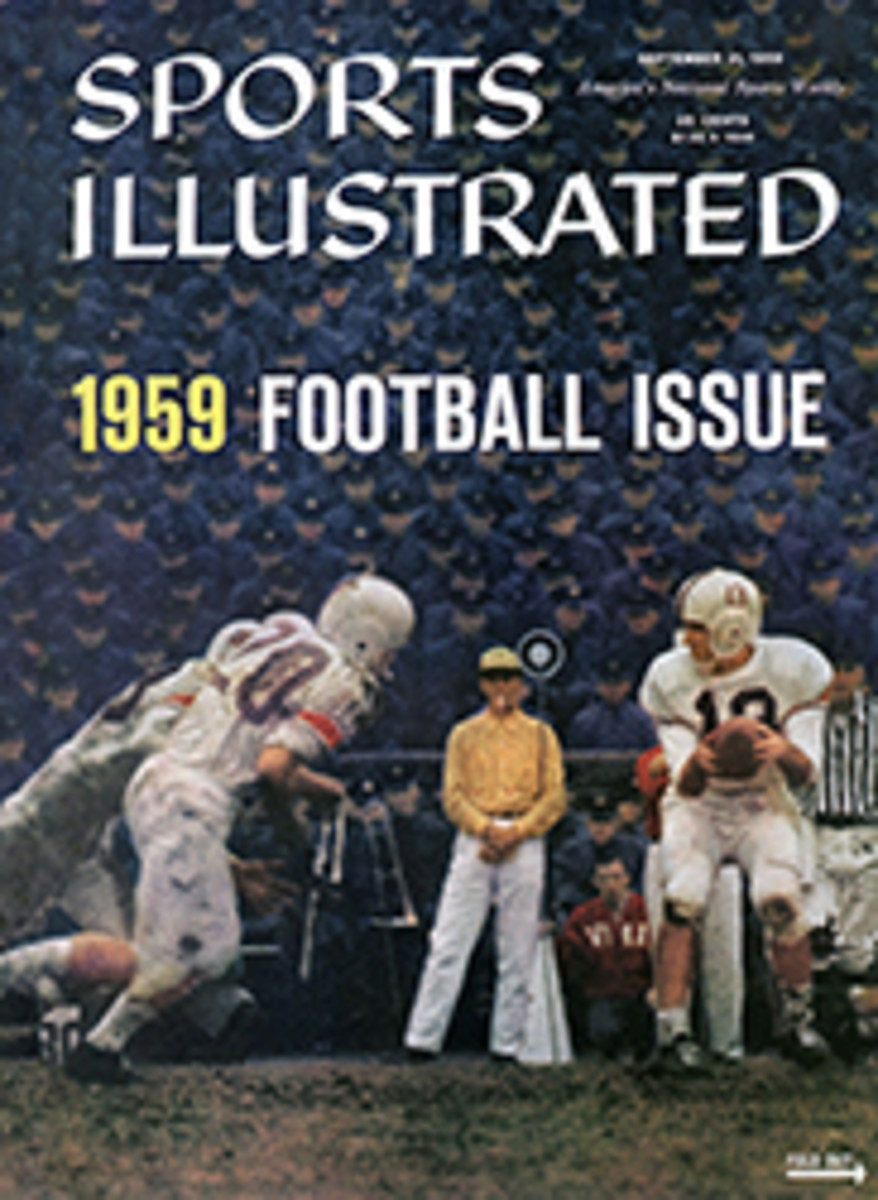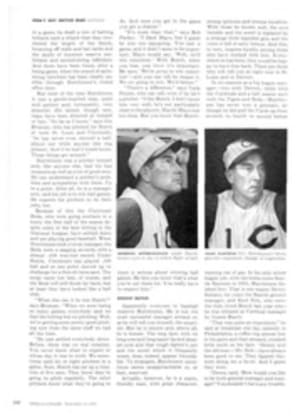
Lightning down the stretch
Twelve thousand racing fans, a mighty lot of them in string ties1 and riding boots of their own, jostled good-naturedly into a small southwestern track on Labor Day afternoon to watch the richest little horse race in the world, the 400-yard All American Futurity for quarter horses. What they saw was a slicked-up version of a Wild West cavalry charge down a straightaway with a $130,000 pot of gold at the end.
The scene was Ruidoso Downs, New Mexico, a sparkling little weekend race track 7,000 feet up in the scrub-pine-dotted Sacramento Mountains and so far from any large city that 39 separate spectator parties flew in by their own private planes.
Ruidoso Downs often runs sprints for Thoroughbreds over its ‚Öù-mile oval, but its real pride is in serving as the combined Churchill Downs and Santa Anita of quarter horse racing—that sporting evolution from the days when cowboys rode into town and challenged all comers to a race down Main Street, winner take all.
These were still essentially range horses ("using" horses is the way the cowmen like to talk about them), which were led by a Stetson-hatted cowgirl past the Ruidoso Downs grandstand in the lengthening mountain shadows of the late September afternoon.
The watchers hardly needed binoculars. For the All American a field of 10 fractious 2-year-olds was eased into the starting gate at the head of a straightaway running tangent to the oval; the finish line beckoned in front of the stands. Then they burst forth, pawing for traction and all-important early speed. In the charging start one horse threw its rider, but down the stretch roared the rest in a race that is all stretch and where no purpose whatever is served by striving for the rail. Almost the whole field was neck and neck to the final 100 yards, where Galobar, a chestnut filly owned by a Colfax, Wash, wheat farmer named Hugh Huntley and trained by his race stable director, Newton Keck, pushed first a head and then a half length in front to win. She took the $65,000 winner's share of the purse, and rewarded pari-mutuel backers with $9.10.
It had taken exactly 20.5 seconds of breath-sucking excitement for Galobar, under the whip-smacking urging of Jockey Clifford Lambert, to show she could start quickest and get there fastest. It took a photo-finish camera to straighten out the next five horses in the head-to-head surge to the wire.
THE QUARTER HORSE TREND
In a sense Galobar's victory marked the end of an era, or to speak more properly, it marked the beginning of an era. For if purses of $130,000 or so are going to be available to quarter horses, then more and more quarter horses are going to be bred specifically to win them. No longer, as by tradition, will every quarter horse be expected to be able to race one day, perform in a rodeo that night and be setting sturdy haunches to hold a roped steer on the owner's range the next morning. Not even in the land of legendary millionaires is an owner likely to take such risks with an animal that might win some renewal of the Ruidoso All American.
As racing has increased in recent years, the quarter horse, an ail-American breed named for its ability to break fast and run at top speed for a quarter of a mile, has been crossed more and more with Thoroughbreds, increasing speed, decreasing working usefulness and developing what some southwestern breeders now call a quarter running-horse.
This trend has met with little approval from the cowmen, who much admire the close conformation and heavy muscles of their "using" horses and have contempt for the daintyankled skittish Thoroughbreds who can't "do" anything but run. The quarter horse, a cowboy will tell you, is calm of manner and disposition. His prototype is chunky, with heavy muscles in legs and shoulders that he knows how to use. He is endowed with the all-important attribute of "cow sense," is a tough, hard worker on the range but as companionable as a setter and often such a family pet that he might be allowed to sleep on the hooked rug in front of the ranch house fireplace if there happened to be room. Above all, says the cowboy, he's fast—fast enough "to burn a hole in the wind."
But he could be faster, say the racing breeders, who have worked at blending more Thoroughbred blood into the breed. Thus of the 140 original candidates for the All American, about half had either a Thoroughbred sire or dam. Galobar is a good example. Her sire was Three Bars, a well-known Thoroughbred stud, and her maternal grandsire was a Thoroughbred.
The quarter horse has a rich American history which began when the basic stock was brought to this country by the Spaniards in the 16th century. Into the mixture later went the blood of Thoroughbreds imported from England by the Virginia colonists. By pre-Civil War days such cattle barons as Captain Richard King, the founder of Texas' King Ranch, had found the stock ideal for work on the giant unfenced ranges. The duties of the quarter horse as a cow pony have changed little since.
As the racing of quarter horses grew in popularity throughout the Southwest the contests themselves moved off the main streets of cow towns to formal tracks, the most important of which is now Ruidoso Downs. Started 13 years ago, the track is actually an accident of gambling laws, thermal laws and geography.
The thermal laws are important because mile-high Ruidoso Downs has cool temperatures and showers, though it is only a few miles from some of the nation's bleakest badlands. This means that race fans are comfortable while enjoying something else that nearby Texas and Oklahoma do not have—the pari-mutuel machine. It is no accident that 70% of the sporting gentry at Ruidoso come from those two states, with an uncommon percentage of Cadillacs and Continentals to be seen on the parking lot.
The gambling urge insured the survival of Ruidoso, but it was still a run-down country fair of a track until Gene Hensley arrived as director of racing seven years ago. Now a modern grandstand seats 6,000, film patrols follow every race on the three-day-a-week card, increased purses have brought in enough horses for 12 races a day (all short), and the mutuel handle reaches a quarter of a million dollars on good days. The track is so successful, considering it has to draw its fans from as far as Dallas, 600 miles away, that a neighboring town has proudly changed its name from Greentree to Ruidoso Downs.
But the biggest move of Promoter Hensley was starting the All American Futurity. He sold horse owners on the race, and it was from the owners' nominating and starting fees that the $130,000 purse came. One owner posted a late-filing fee of $6,500 this summer to make his horse eligible.
The rush for the big quarter horse racing money looks infectious, with one owner reportedly refusing to sell a top horse for $75,000 and enough entries to insure that next year's big race at Ruidoso Downs will be as rich as this year's. It was Gene Hensley who figured the horsemen's response just right. He didn't call last week's race just the All American Futurity; he called it the First Annual Running of the All American Futurity.
PHOTO
OWNER HUNTLEY AND TRAINER KECK BEAM ON GALOBAR AND JOCKEY
PHOTO
DOWN THE MIDDLE COMES GALOBAR TO WIN QUARTER HORSE RACING'S BIG ONE

